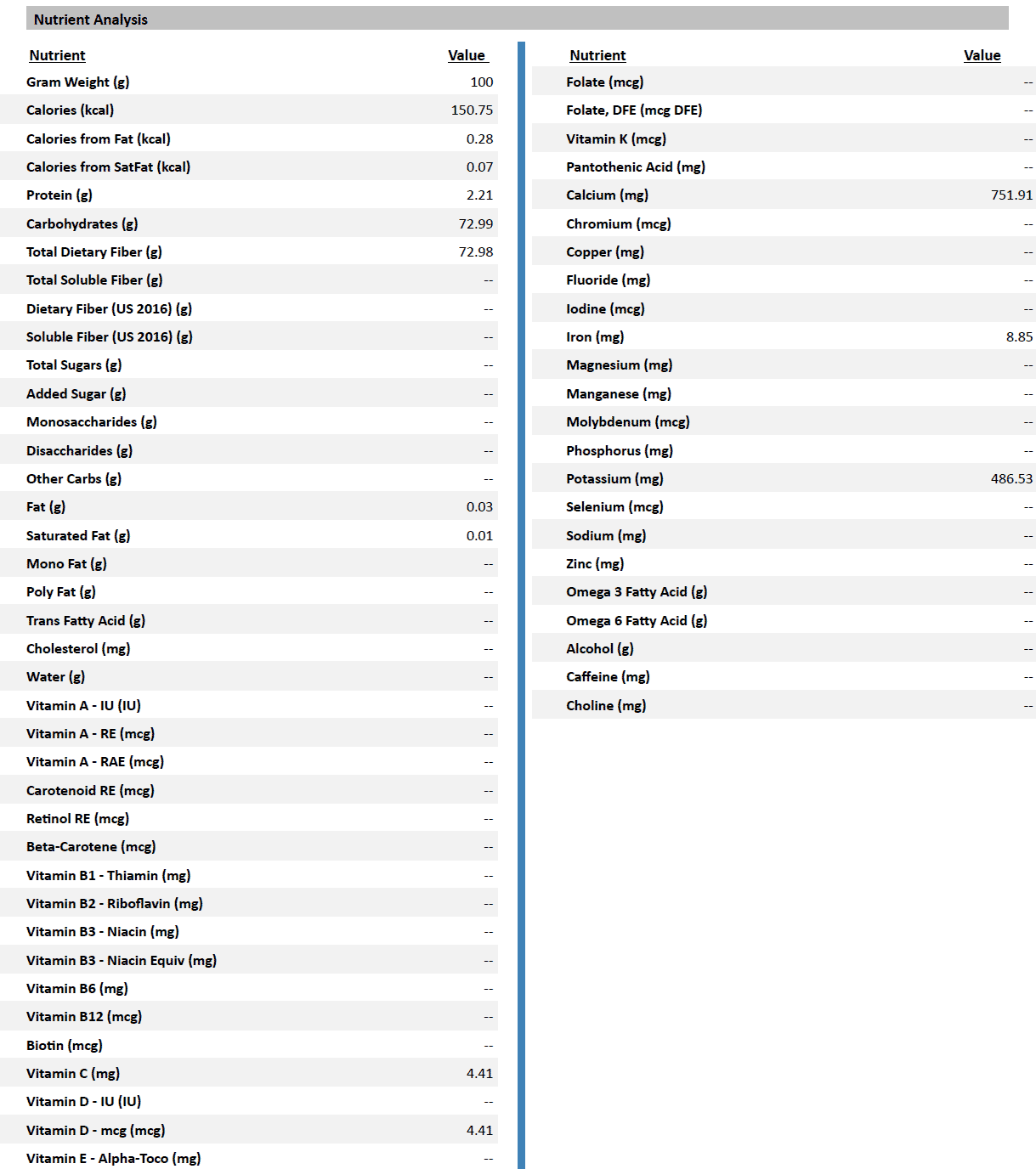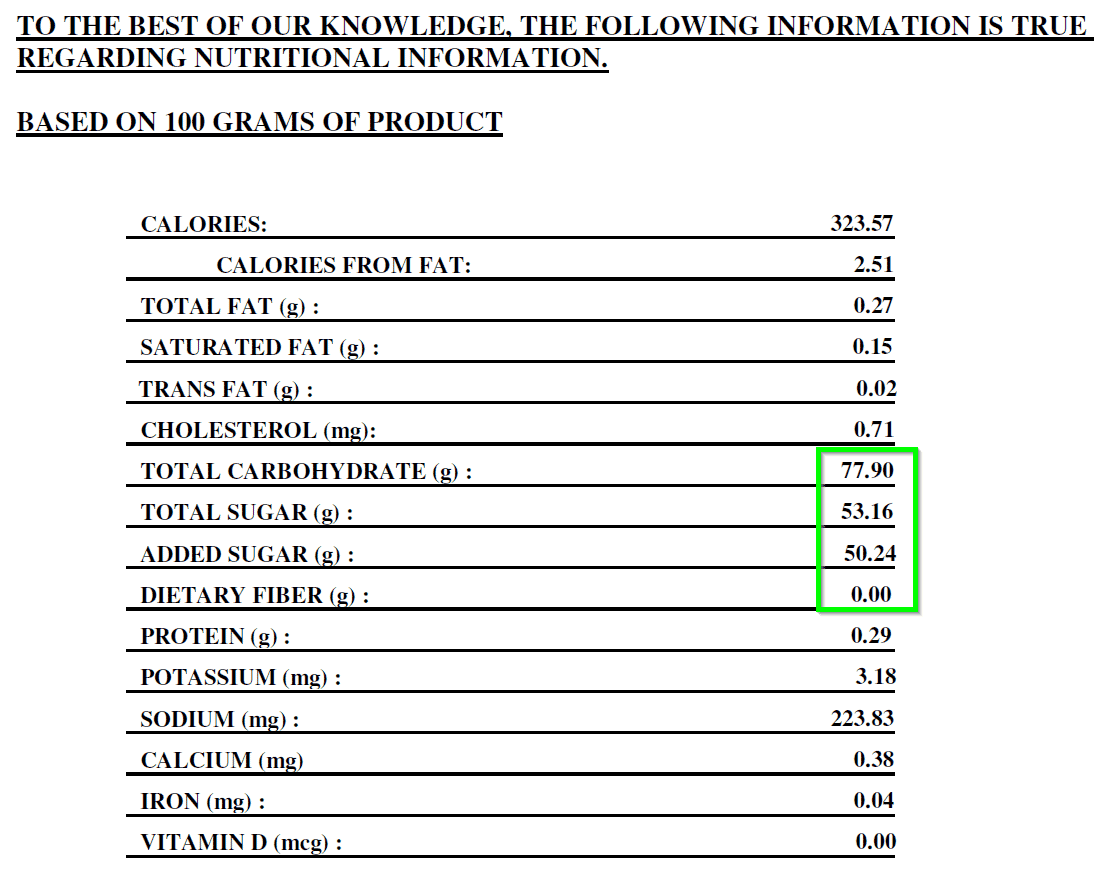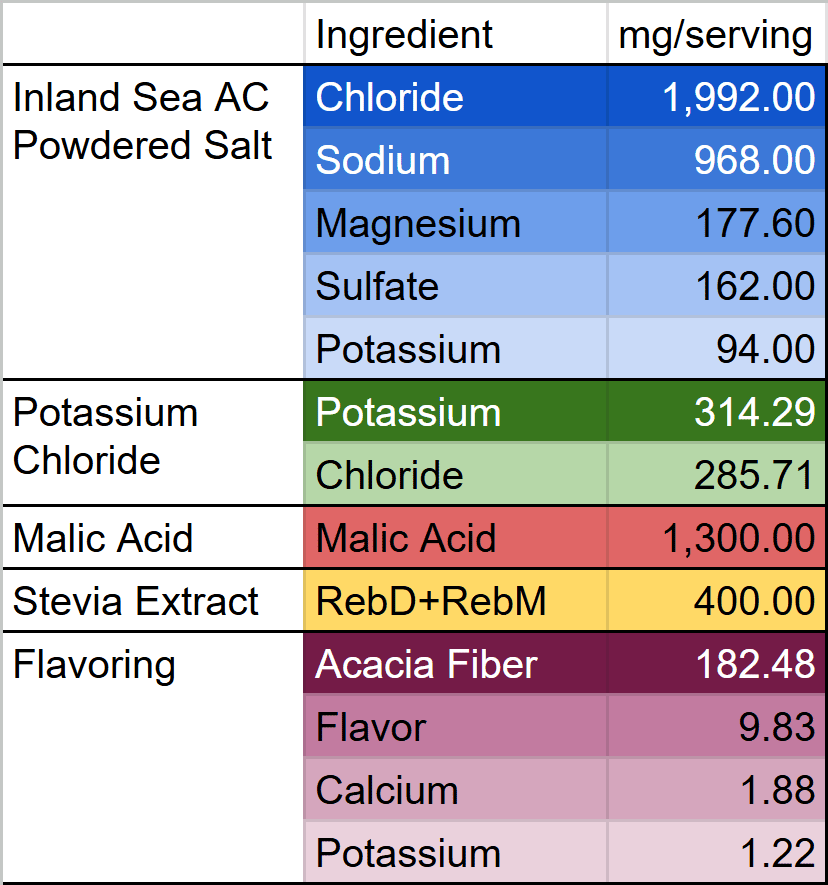In short: No. We do not use “Natural Flavors” or “Artificial Flavors” to hide ingredients in our products, We strongly believe in being honest and open about what is in our products and wish all companies would take it as seriously as we do.
Also in short: food manufacturers may not know the specific aromatics that make a flavor, but they absolutely know what is used to make the liquid aromatics into a powder and that is usually maltodextrin, though we use acacia gum fiber instead.
What even ARE “Natural” Flavors?
First things first, we need to clear up what appears to be a common misunderstanding: what EXACTLY is meant by “natural” or “artificial” flavors when talking about food ingredients?
- If an aromatic compound in a flavor or essence is extracted from a source that occurs in nature (even if it is significantly modified before its final form) that is called “Natural.”
- Conversely, if a compound is created in a lab or process using synthetic components to create a completely new compound, that would be termed “Artificial.”
Another way to think about it would be that you can take water from the ocean and distill it to make desalinated water, that is “natural.” If you take a fuel and burn it, creating carbon dioxide and water vapor, technically that water was created by a chemical process (burning) and you have “artificial” H2O. The distinction between the two is how they originate, although both typically go through a considerable amount of changes to get to their final form.
OK, so what’s the problem with “natural flavors” in foods?
Partly because you can’t copyright or patent a recipe, The USDA, FDA, and FTC allow food manufacturers in the United States to… well… hide small ingredients under the umbrella of “natural flavor” and also under “artificial flavor.” It’s legal, rather common, and it’s a jerk thing to do to your customers. The practice is prevalent enough that many people with a platform will tell those who listen to completely avoid anything with the ingredient “natural flavor(s).” You may have seen lists on the Internet of “names of sugar” with Natural Flavor as one of them. The interesting thing is that “artificial flavor(s)” has the same potential for abuse – it isn’t any better or worse. Ultimately it comes down to: how much do you trust the people making a product? Do they go so far as publishing their recipe? Have they tried actually using the product for 100 days and publishing all of the data including blood tests and more? We hope to prove ourselves worthy of your trust.
One of the things that is commonly hidden under natural or artificial flavor is maltodextrin.
Malto-what?
Maltodextrin is starch. It’s typically made from corn but can be made from tapioca or other starchy vegetables. Maltodextrin impacts different people in different ways. A healthy person may have no reaction at all to extremely large amounts of maltodextrin (body builders mix drinks that are JUST maltodextrin because it triggers insulin which can help bulk up muscles). People that are trying to manage their insulin will typically wish to avoid maltodextrin at all costs. There is also some anecdotal evidence that people with allergies to corn may react to maltodextrin from corn, other people react to maltodextrin from any source, GMO or otherwise. There is a scale that measures what foods do to a healthy person’s blood sugar, it’s called the glycemic index. Essentially you measure the reaction to pure glucose and then compare that to other foods with glucose being 100. Sucrose/sugar is around 63 because half of it is fructose which has to be processed by the liver, it takes a while. Maltodextrin is 105-110 meaning it raises blood sugar more than pure glucose. That’s understandable because maltodextrin turns into glucose when exposed to saliva. The FDA considers maltodextrin to NOT be a sugar and can be included on foods labeled as “sugar free.” Your body, however, can turn maltodextrin into sugar before you have even swallowed it.
Zero Maltodextrin in ALL of our products
We work exceptionally hard to make certain that none of our products have ANY maltodextrin – at all. This is extremely difficult to do because maltodextrin is commonly used as a binder and bulking agent so that liquid flavors can be made into a powder – the manufacturing industry loves the stuff, but we don’t want it in our products. Instead, we use Acacia Gum. It works nearly as well as maltodextrin but also lets fats mix with water (it’s an emulsifier) and even though acacia gum is a fiber that humans can’t digest, your gut bacteria turns it into butyrate and other short chain fats. It’s extremely cool stuff… but it is also more expensive, more difficult to use and to source than maltodextrin; which is why the foods industry doesn’t like to use it unless you stomp your feet and throw a fit like a petulant child.
Because using something OTHER than maltodextrin is such an “up-hill battle” – if a powdered/dry product is flavored and does not overtly proudly LOUDLY declare that they do not use maltodextrin, it is reasonable to assume that the product uses maltodextrin in the flavoring. It’s a big deal to the companies that care.
So what IS in the flavorings you use?
Finally, we arrive at “what EXACTLY is in the natural/artificial flavorings you use?” – We can easily tell you what IS NOT in it (no maltodextrin!), it’s far harder to say what is in them. Let us explain the issue.
The way all flavor manufacturer works is they will not divulge a list of the exact specific aromatic components in a flavor because they consider that a closely held trade secret and the same applies to both flavors made from ingredients that occur naturally and flavors made from ingredients that are synthesized in a lab. What we can do, especially for concerns regarding allergens, is check to see if a specific ingredient or compound is present in one of the flavors. Such is the case with our Pistachio flavor for Keto Chow – the question was raised “hey, I’m allergic to pistachio nuts – does this have actual compounds (proteins) from pistachios that would trigger an allergy?” At most, it takes a few days for us to get back an answer. In the case of Pistachio, the answer was that the “Natural” flavors do not contain any actual compounds from pistachio nuts and is therefore safe for people with pistachio allergies. Cool! Pina Colada, however, does contain actual Pineapple extracts.
Another issue regarding the specific aromatic compounds in a flavor is that knowing what they are isn’t especially helpful. Let’s look at what’s in an all-natural strawberry – like the fruit. Here’s the full list of flavors in a regular strawberry:
2,5-dimethyl-4-hydroxy-2h-furan-3-one, 2,5-dimethyl-4-methoxy-2h-furan-3-one, gamma decalactone, gamma-dodecalactone, 2-furfural, 5 hydroxy ethyl-furfural, ionene, inialool, (e)- nerolidol, e1510, hexanol, octanol, methyl butanoate ethyl butanoate, methyl hexanoate, ethyl hexanoate, hexyl ethanoate, ()-2-hexen-1-yl ethanoate, utyl ethanoate, methyl octanoate, ethyl octanoate, octyl-2-methyl butanoate, octyl hexanoate, decyl butanoate, decyl ethanoate, methanethiol, ethyl 3-methylbutanoate, geraniol, e210, farnesyl acetate, mesifurane, methyl anthranilate, gamma-decalactone, methional, dimethoxymethane, 1-butoxy-1-ethoxyethane
2,5-Dimethyl-4-methoxy-3(2H)-furanone sounds pretty weird right? That’s one of the distinctive aromatic compounds that strawberries make and is likely in all natural or artificial strawberry flavors. People often say “if you can’t pronounce it, don’t eat it” but this is the chemical name of what strawberries make – is eating a strawberry a big deal? It contains the CHEMICALS listed above. Eggs contain acetone and formaldehyde in their flavoring chemicals, un-modified cabbage naturally produces pesticides and known carcinogens.
To be clear: We aren’t saying that knowing what is in a product is NOT important (see maltodextrin above!) we are saying that knowing the exact list of the aromatics in a flavor is helpful for specific things:
- If you have an allergy, knowing that allergen is NOT in a product is vital – we can totally help you with that!
- A flavor manufacturer/chemist could use a list of the ingredients in a flavor to copy it and clone a product’s flavor
- I can’t think of a 3rd thing – let us know if you can.
Now it’s time for the deep dive – could a product manufacturer NOT know they have maltodextrin?
With almost absolute certainty we say: No, they would absolutely be aware of maltodextrin, dextrose, or sugar content and quantity. We work with multiple flavor manufacturers, and all of them do provide some detailed information regarding the flavor carrier/drying agent (which is typically maltodextrin, we use acacia gum) along with a nutrition analysis. Really we have everything except for the aromatic compounds. All food manufacturers WILL have this information and it’s relatively easy for them to look at the “total carbohydrates” and compare to the “dietary fiber” line. Unless there is dietary fiber (like acacia gum) then all of the total carbohydrates in the nutrition analysis for the flavor will be maltodextrin or dextrose (sugar). Period. It’s really that simple.
These nutritional analysis documents are nearly always for 100g so the figures are a direct percentage. If a product contains 1000mg of flavoring and the flavoring is 85% total carbohydrates (with no fiber) then there are 850mg of maltodextrin. If they use 600mg of flavor then it would be 510mg of maltodextrin, etc…
Real world examples from our own flavorings
Let’s look at some of the information that we have from our flavor manufacturers, here are parts of the actual data sheets for 2 of our flavors plus a flavor that we DO NOT use!
Flavor 1 nutritional analysis (click to enlarge) all of the carbohydrates are fiber (acacia gum):

And here is the ingredient list provided for flavor 1, you will note that the flavor carrier/drying agent is clearly listed (click to enlarge):

Here is the nutritional analysis for flavor 2 (click to enlarge) all of the carbohydrates are fiber (acacia gum):

And here is the ingredient disclosure (click to enlarge). You will note again that the flavor carrier is listed. In this case, Rosemary extract is used as an antioxidant to make the flavor store better, since this is a flavor that occurs naturally, it falls under the umbrella of “natural flavors”:

Now let’s look at a “normal” flavor similar to what would be used by most product manufacturers. WE DO NOT use this flavor. We specifically require our flavors to be made with acacia gum and this one was sent to us before we told the flavor manufacturer that we can’t use maltodextrin or sugar:

Well, THAT is different! Let’s look at the ingredient disclosure for the flavor:

OK then, that’s a lot of dodgy ingredients! Here’s the issue that many people have with current labeling laws: all of the ingredients above could be put on the label of a product as “Natural and Artificial Flavors” – no mention of corn starch, corn syrup, etc… and THAT is the problem people see with “natural flavor” on ingredient lists.
If Maltodextrin sucks, why do companies use it?
The most likely reasons are:
- Maltodextrin is cheap and works better than acacia gum
- Acacia gum is more expensive and is harder to use
- They do not think that the market knows or cares about maltodextrin
- Some consider tapioca maltodextrin to be an alternative to corn maltodextrin (sorry, it’s still maltodextrin!) and that’s good enough
- Some companies just have an idea for a product and lack the expertise to specify ingredients, which leads us to…
- Most places that do the actual mixing and packaging have never used anything BUT flavors with maltodextrin and it won’t even occur to them to look for an alternative
Certificates of Analysis and lot variations
One other aspect to all this is that ALL of the ingredients being used to create food products have a similar “generic” nutritional analysis and each batch or “lot” of the ingredient comes with a Certificate Of Analysis that gives the exact values for that specific batch. That COA analysis will often come with 2 data points: the average figure and the figure for this batch. The FDA labeling guidelines allow using the average numbers because printing a completely new package for each change in ingredient lot/batch is unreasonable. The figures must be +/- 10% though, and many manufacturers require their suppliers to be even closer with only a 1-2% deviation allowed from the specification. These specification nutritional analysis documents allow us to see how much protein, sodium, potassium, and other nutrients are in an ingredient and with that information we can build a nutrition label with reasonable confidence.

Above are the 5 ingredients in our SALTT Electrolyte Drink Mix using the nutritional analysis breakdown for each individual ingredient adjusted for the amount in a single serving. You’ll notice potassium and others are on there multiple times. This might also help you understand that: of the 4g of powdered salt, not all of it is sodium (most is chloride!) and the 600mg of potassium chloride yields 314mg of potassium. If we were using maltodextrin in our flavorings, the 182mg of acacia gum would be 182mg of maltodextrin. You may notice that the numbers don’t all add up to the full serving size, that’s because some of the mass is water/humidity and some is what’s classified as “ash” or a sort of, “this is the stuff that’s left over that isn’t water.” Here is the above table as a graph (click to enlarge):

If you have additional questions about flavors or our products, please do ask us. We’re super passionate about giving people the information we can to help them make informed decisions about their health.
For our screen reader people, here’s a text version of the table above:
| Ingredient | mg/serving |
| Inland Sea AC Powdered Salt | Chloride | 1,992.00 |
| Sodium | 968.00 |
| Magnesium | 177.60 |
| Sulfate | 162.00 |
| Potassium | 94.00 |
| Potassium Chloride | Potassium | 314.29 |
| Chloride | 285.71 |
| Malic Acid | Malic Acid | 1,300.00 |
| Stevia Extract | RebD+RebM | 400.00 |
| Flavoring | Acacia Fiber | 182.48 |
| Flavor | 9.83 |
| Calcium | 1.88 |
| Potassium | 1.22 |







